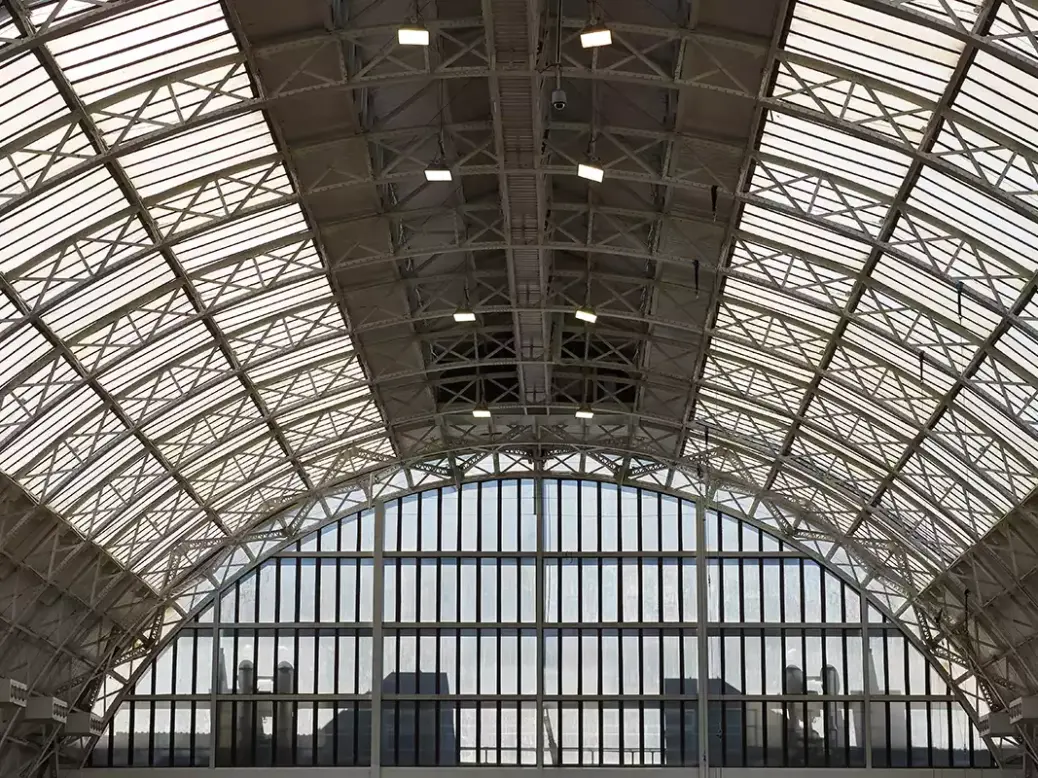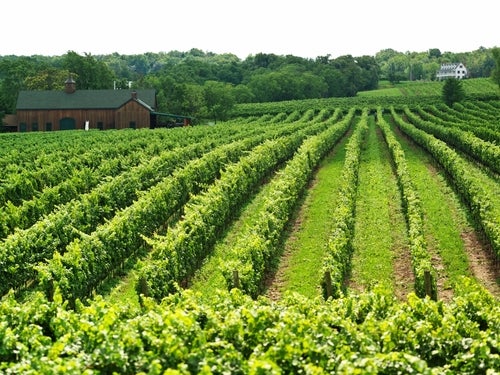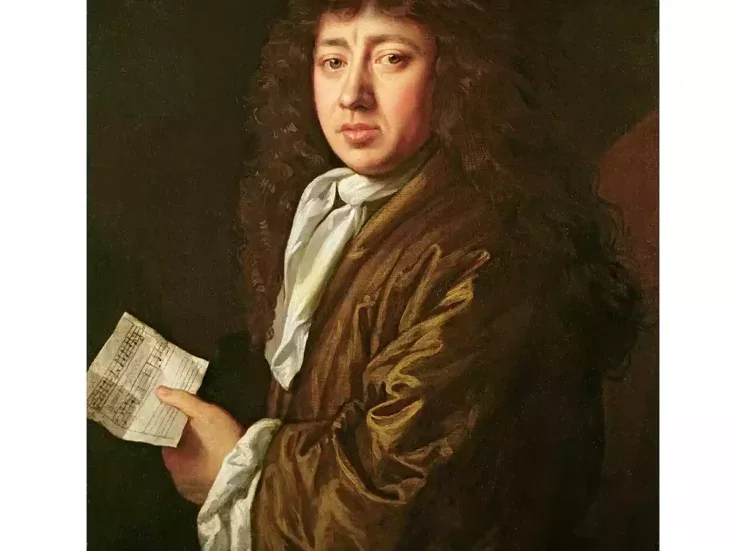
Anne Krebiehl MW reports from the Judgment of London, a blind comparative tasting inspired by Steven Spurrier’s 1976 event but one that had a reassuringly closer result.
When the invitation came to be a taster at the Judgment of London, staged on the first day of the London Wine Fair (LWF), May 20, 2024, I accepted with alacrity. The 21 judges—distinguished merchants, sommeliers, and wine writers—gathered with a sense of anticipation and curiosity.
Hannah Tovey, head of the LWF, welcomed us and confessed that she, vintage 1976, had always had “a fascination with the Judgment of Paris.” She immediately paid due to the late Steven Spurrier, who staged that groundbreaking event almost 50 years ago, and who “always referenced the people behind the wines,” she said. “It is a real honor to run this tasting in homage to him.” She explained that once the idea was born, she “reached out to Ronan [Sayburn MS, CEO of The Court of Master Sommeliers] and Sarah [Abbott MW, MD of Swirl Wine Group] straightaway, to ensure the ideation of the tasting, the curation of the wine list, and that the scoring system be given correct consideration.” She delighted in “being privy to the geek-level conversations between the two.”
Sayburn, speaking next, also hailed Spurrier’s original event but noted that he did not expect there to be “a clear winner” this time around, since the categories of “Old” and “New” World are now “blurred. We, certainly in the MS community, are dropping this distinction.” He noted that all the wines would be revealed after the tasting, with their identity embargoed until the results had been computed. He also explained that once the wines were chosen, “we told producers to select their favorite vintages between 2005 and 2020,” to give them a chance to contribute a wine that in their opinion would show best at this time—and the wines were then sourced with “Hannah’s credit card at Hedonism,” a veritable mecca of a wine shop in London’s Mayfair.
Abbot was up next. “The UK wine trade is really rooted in the drive to make the world of wine as diverse as possible,” she said, pointing out that Spurrier’s own curiosity and open-mindedness helped shape this spirit: “You would have expected someone of his background to be a lot more canonical, but he was not.” She then explained the protocol for our tasting. The wines—eight pairs each of whites and reds, 32 wines in total, were put together around either a “varietal or a textural context,” always a European wine and a wine from the rest of the world. “Each pair has the same theme, and you can use that to dig into the nuance […]. You are not being tested; we are not showing off our blind-tasting party tricks—this is about getting into the soul of the wine. These are very high-quality wines, so you can expect a lot from them, and I urge you to reward this. Conversely, if something is not showing well, do not be afraid to show this in your score. Everything here should be beautiful and expressive.” She also urged us not to be “distracted by trying to ‘get’ the wines” but rather to “return to their intrinsic quality.” We were to score each wine on a scale of one to ten. No notes were needed, no identifications; just a score for each wine. We had two hours to assess and score the whites, then later, the same for the reds.
Insights and surprises
Sommeliers Ioanna Nerantzi, from Greece, and Dion Wai, from New Zealand, poured the wines from identical carafes and silence descended. We gave ourselves completely to the pleasure of tasting these wines blind, blissfully free from the pressure of identifying provenance, just evaluating the relative similarities and differences within each pair. Of course, some grape varieties clearly identified themselves—Riesling, for example—but others less so, and I reveled in simply recording my impressions and assessing the wines according to the time-honored and timeless paradigms of balance, length, intensity, and complexity. A joyous task, as numerous wines were simply delicious. The allotted time was a boon, because we could go back over each wine and reassess its development in glass before recording a final score. The glasses were Jancis Robinson x Richard Brendon, which lived up to their claim of universality.
Once all the score cards had been collected, Sayburn revealed the white wines—and boy, were there some surprises! The standout was Jeffrey Grosset’s 2012 Polish Hill Riesling—my only full 10-point score of the entire tasting for this dream of a wine. My heart leapt when Felton Road, a sort of alma mater for me, outshone Jadot’s 2017 Corton-Charlemagne with its 2017 Block 6 Chardonnay. The greatest surprise for me was Livio Felluga’s Terre Alte from Friuli, which had been pitched against Au Bon Climat’s Hildegard, a blend of Pinot Gris, Pinot Blanc, and Aligoté. Some pairings were inspired—like the Rieslings from Pegasus Bay in New Zealand and Hirtzberger’s Singerrriedl from the Wachau. Imagine these side by side, and consider the delicious juxtaposition.
Our conversations at lunch circled around the wines, the brilliant selection, our individual surprises, and, of course, guessing what compelling selections Abbott and Sayburn had made for the reds that would be tasted in the afternoon. My own thoughts included the fact that in 1976 there had been only one woman among the nine tasters—Odette Khan, editor of the La Revue du Vin de France. Among our 21 judges at the Judgment of London, 11 were women and ten were men. Change, indeed.
The reds were more difficult to assess, and not all were a complete joy for me. The 2018 Clos Rougeard seemed to me to have Brett, which I could not get past, while some tasters seemed not to mind. I had looked forward to the Pinot Noirs and was not disappointed, since the ample time allowed revealed true greatness. The 2017 Dujac Bonnes Mares Grand Cru, in particular, opened up into exquisite aromatic florality, but only after quite some time in the glass. The best pair for me was the Syrah selection—the beguilingly peppery 2018 Trinity Hill Homage Syrah alongside the 2018 J-L Chave L’Hermitage, in all it smoky, meaty, and brooding glory, yet so elegant as well. Also notable was the Torbreck Grenache from the Barossa, putting paid to the notion that this region is a no-go for lovers of nuance and freshness. Italy was sadly missing from the reds, and unlike most judges, I preferred the 2009 Léoville-Las-Cases to the 2009 Mouton Rothschild (not paired together)—but then, I am not a claret girl.
While the reds were also revealed once all score cards had been collected, the results were not out until the next day. They were computed according to the Borda Count, by Alex Gokulsing, director of Alsto, a data company. He explained that this was a “non-dictatorial positional voting method, which ranks the wines in order and uses a preferential voting scheme to aggregate the rankings. The result has less bias than plurality voting, which can give greater weight to judges who put plenty of scatter into their scores.” Tovey said the method had been chosen to “get rid of any clustering.” The beauty is that, with this weighting, there was a mere 0.65% difference between Europe and the rest of the world.
After the tasting, I spoke to Sarah Abbot to learn more about the ideas behind the event. “We wanted,” she said, “to riff off that eternal narrative of the big competition: Who’s going to win? That’s viscerally programmed into every human, to be interested in a competition. We wanted to harness that. But we were also very aware that Steven’s concept was really iconoclastic. We’re in a very different world, and we all know that great wine can come from all over the world, so we wanted to celebrate that.”
I can only agree. The world of wine—its people and its wines—have never been so diverse or of such stunning quality; to taste these wines completely blind, in a perfect setting, allowed us to enjoy their deep beauty and beguiling presence. This is how we should encounter every wine—without prejudice, open to its every nuance. It was a privilege to be at this well-conceived and executed event.
The Judgment of London results
Top-scoring white
2011 Pegasus Bay Riesling Bel Canto, Waipara, North Canterbury, New Zealand
Runner-up
2012 Grosset Polish Hill Riesling, Clare Valley, Australia
Top-scoring red
2012 Jean-Louis Chave L’Hermitage Rouge, Rhône, France
Runner up
2009 Château Mouton Rothschild, Pauillac, Bordeaux, France
Top-scoring wine
2011 Pegasus Bay Riesling Bel Canto, Waipara, North Canterbury, New Zealand
European wines 2,621.5 points
Rest of World 2,604.5 points
Overall winner Europe
Difference 0.65%
WHITE WINES (in the pairs and order tasted)
Riesling
Rest of World 2012 Grosset Polish Hill Riesling, Clare Valley, Australia
Europe 2008 Trimbach Riesling Clos Ste Hune, Alsace, France
Chardonnay
Europe 2018 Marchese Antinori Cervaro della Sala, Umbria, Italy
Rest of World 2018 Kistler Chardonnay Les Noisetiers, Sonoma, CA, USA
Chardonnay
Europe 2017 Maison Louis Jadot Corton-Charlemagne Grand Cru, Burgundy, France
Rest of World 2017 Felton Road Chardonnay Block 6, Central Otago, New Zealand
Blend
Rest of World 2020 Au Bon Climat Hildegard, Santa Maria Valley, CA, USA
Europe 2020 Livio Felluga Terre Alte, Friuli, Italy
Sauvignon Blanc
Europe 2017 Château Smith Haut Lafitte, Grand Cru Classé, Pessac-Léognan, Bordeaux, France
Rest of World 2014 Peter Michael Winery Sauvignon Blanc L’Après-Midi, Sonoma, CA, USA
Textured
Rest of World 2011 Pegasus Bay Riesling Bel Canto, Waipara, North Canterbury, New Zealand
Europe 2019 Franz Hirtzberger Riesling Singerriedel Smaragd, Wachau, Austria
Rhône
Rest of World 2011 Tahbilk Viognier, Nagambie Lakes, Australia
Europe 2020 Pierre Gonon, St-Joseph Blanc Les Oliviers, Rhône, France
Textured
Europe 2014 Quinta dos Roques Encruzado, Dão, Portugal
Rest of World 2019 David & Nadia Chenin Blanc, Skaliekop, Swartland, South Africa
RED WINES (in the pairs and order tasted)
Pinot Noir
Rest of World 2019 Storm Pinot Noir Ridge, Hemel-en-Aarde, South Africa
Europe 2017 Domaine Dujac Bonnes Mares Grand Cru, Burgundy, France
Pinot Noir
Europe 2019 Weingut Meyer-Näkel, Pfarrwingert Spätburgunder, Ahr Valley, Germany
Rest of World 2019 Hirsch Vineyards, Pinot Noir, San Andreas, Sonoma, CA, USA
Cabernet
Rest of World 2019 Promontory, Napa Valley, CA, USA
Europe 2009 Château Mouton Rothschild, Pauillac, Bordeaux, France
Cabernet Sauvignon
Europe 2009 Château Léoville-Las-Cases, St-Julien, Bordeaux, France
Rest of World 2015 Viñedo Chadwick, Maipo Valley, Chile
Syrah
Rest of World 2018 Trinity Hill Homage Syrah, Hawkes Bay, New Zealand
Europe 2012 J-L Chave L’Hermitage Rouge, Rhône, France
Textured
Europe 2019 Qvevri Wine Cellar Saperavi Qvevri, Kakheti, Georgia
Rest of World 2015 Clonakilla Shiraz/Viognier, Canberra, New South Wales, Australia
Grenache
Rest of World 2016 Torbreck Hillside Vineyard Grenache, Barossa Valley, Australia
Europe 2019 Clos Magador, Priorat, Spain
Cabernet Franc
Europe 2018 Clos Rougeard, Saumur-Champigny, Loire, France
Rest of World 2018 Gran Enemigo, Cabernet Franc, Gualtallary, Argentina






